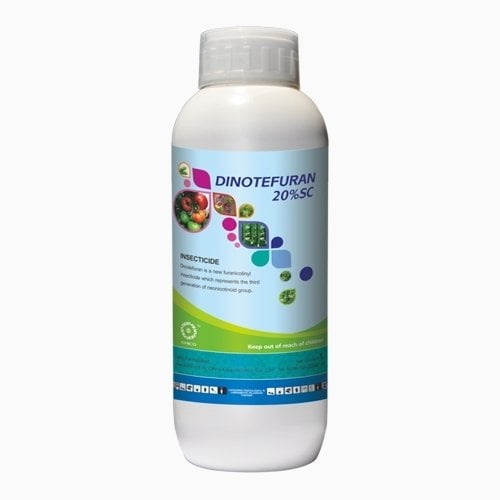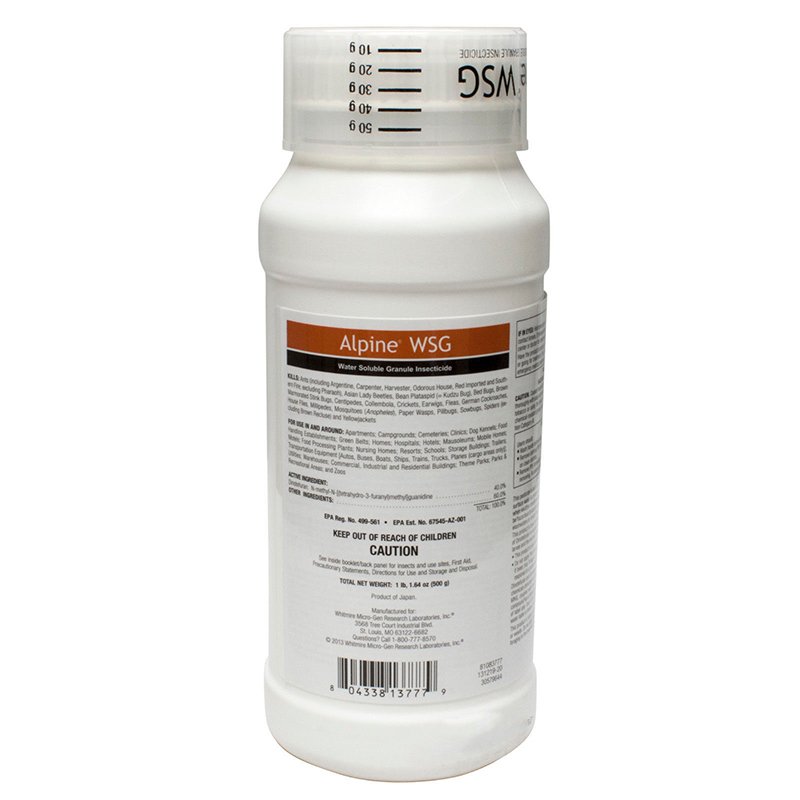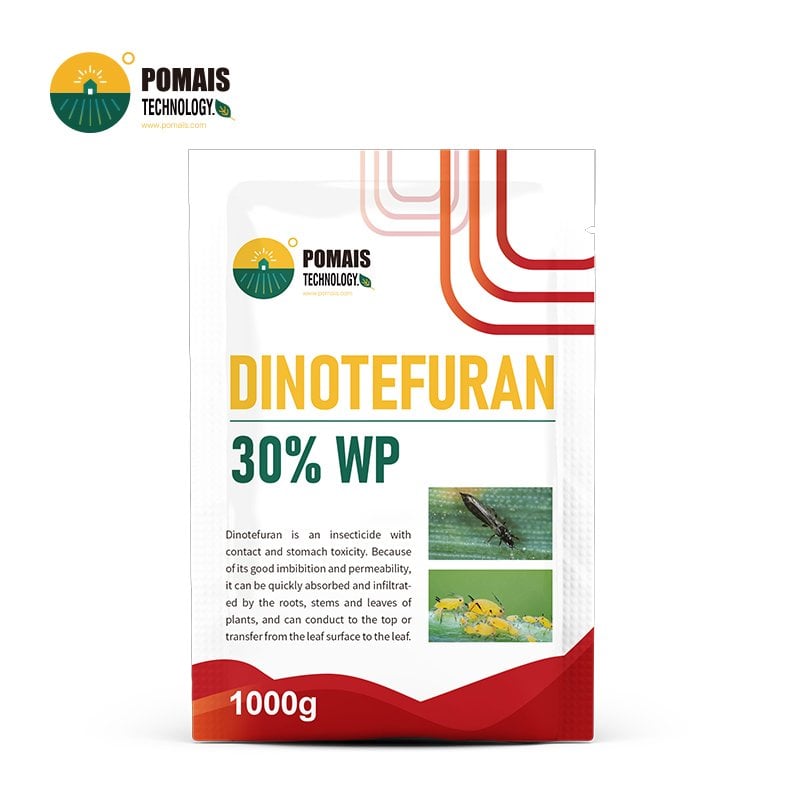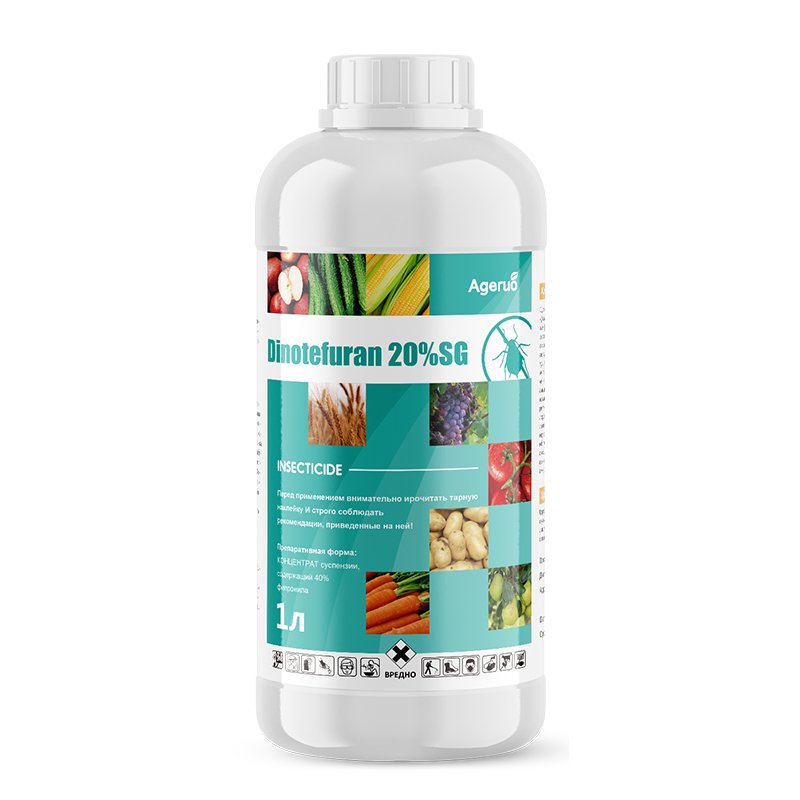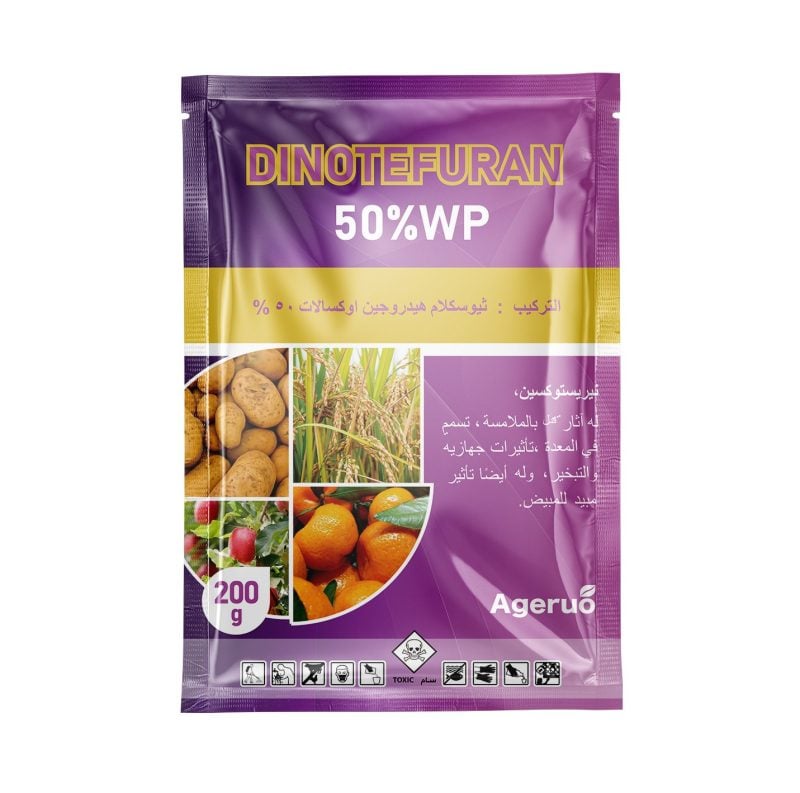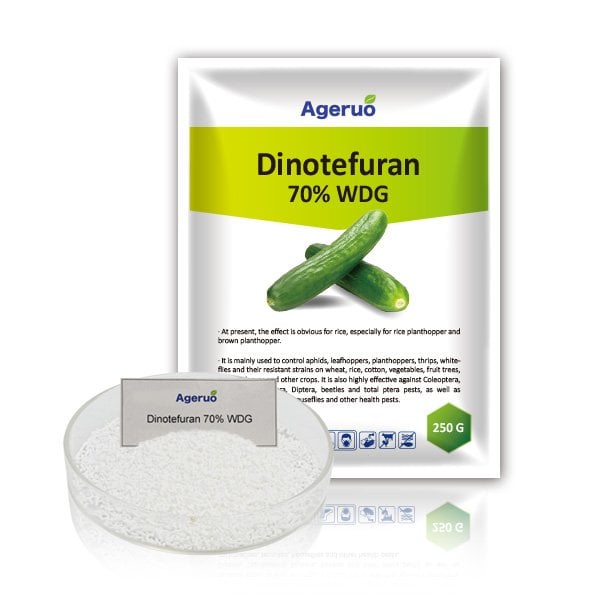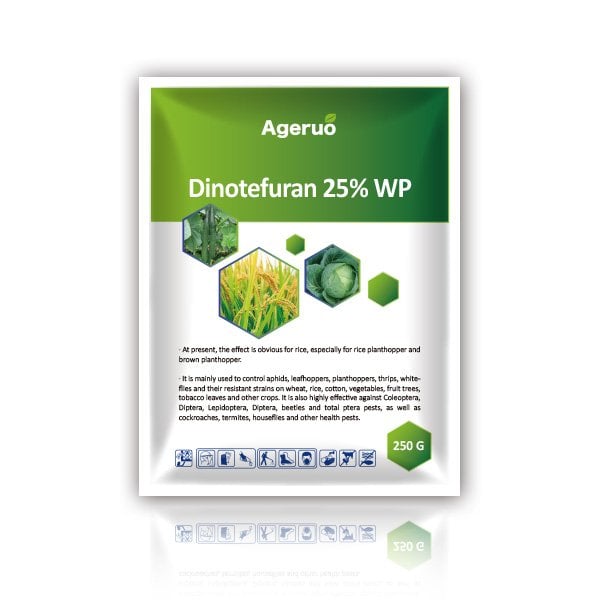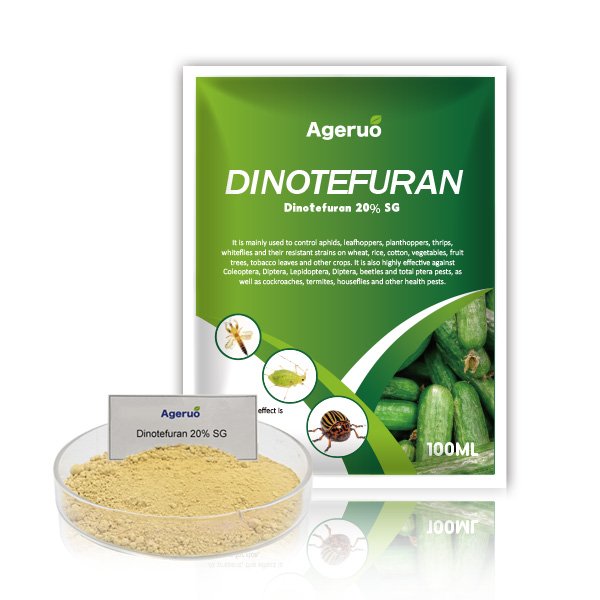How is Dinotefuran for Ant Control?
Ants can be a nuisance in homes, gardens, and agricultural areas. While there are various methods for ant control, Dinotefuran is increasingly used as an effective solution for dealing with these persistent pests. This article explains how Dinotefuran works against ants, why it’s a popular choice for ant control, and how to use it for optimal results.
What is Dinotefuran?
Dinotefuran is a systemic insecticide that belongs to the neonicotinoid class of chemicals. It is widely used in agriculture and pest management to control a range of insect pests. As a systemic insecticide, Dinotefuran is absorbed by plants and animals, affecting pests that come into contact with or feed on the treated surfaces.
For ant control, Dinotefuran targets the nervous system of ants by disrupting nerve signal transmission, ultimately causing paralysis and death. Its ability to affect ants at different stages of their life cycle makes it a powerful tool for both outdoor and indoor ant management.
How Does Dinotefuran Work Against Ants?
Dinotefuran affects ants by entering their system through contact or ingestion. It works by binding to specific nicotinic acetylcholine receptors in the ants’ nervous system, preventing normal nerve signal transmission. This interference results in paralysis and eventually leads to the death of the ant. The insecticide is effective on adult ants, larvae, and eggs, which makes it a reliable solution for controlling the entire ant colony.
Why Choose Dinotefuran for Ant Control?
Here are some reasons why Dinotefuran is a preferred choice for controlling ants:
1. Systemic Action
Dinotefuran’s systemic action means it can be absorbed by plants and carried throughout their tissues. Ants that feed on these plants or come into contact with treated surfaces will ingest the insecticide, which helps control the colony over time.
2. Effective on Multiple Ant Species
Dinotefuran is effective on various types of ants, including carpenter ants, fire ants, argentine ants, and pharaoh ants. Its broad-spectrum efficacy makes it a versatile option for both homeowners and agricultural professionals.
3. Long-Lasting Control
Once applied, Dinotefuran provides long-lasting protection. It continues to affect ants for several weeks, which is especially beneficial for outdoor applications, preventing reinfestation after treatment.
4. Easy to Apply
Dinotefuran is available in several formulations, including granules, liquid concentrates, and bait stations, making it easy to apply both indoors and outdoors. It can be applied to ant trails, nests, or surrounding areas to ensure complete coverage.
5. Safe for Pets and Humans
When used according to the manufacturer’s instructions, Dinotefuran is considered safe for pets and humans. However, care should be taken to avoid over-application and exposure to treated areas before the insecticide has dried or settled.
Application Methods of Dinotefuran for Ant Control
Depending on the specific ant infestation and the form of Dinotefuran being used, there are several methods for effective application:
1. Granules
Dinotefuran granules are typically spread around the perimeter of a home, garden, or agricultural field. The granules are easy to apply using a broadcast spreader. Once applied, the granules are watered in, allowing the insecticide to be absorbed by the soil or plant roots. Ants that come into contact with the treated area will ingest the insecticide, effectively controlling the colony.
2. Bait Stations
For targeted ant control, bait stations containing Dinotefuran can be placed along ant trails or near ant nests. Ants are attracted to the bait, which they carry back to their colony. The insecticide is then spread throughout the colony, killing both foraging ants and queen ants. Bait stations are particularly useful for controlling large colonies in difficult-to-reach areas.
3. Liquid Formulation
A liquid concentrate of Dinotefuran can be diluted with water and sprayed directly onto ant trails or nests. This method is effective for outdoor infestations in lawns, gardens, and around the foundation of a building. Liquid formulations can also be used indoors to treat visible ant trails.
4. Soil and Plant Treatment
Dinotefuran can also be applied to plants to prevent ant infestations, particularly in gardens or agricultural settings. When ants feed on the treated plants, they ingest the insecticide, which eliminates the pests.
Effectiveness of Dinotefuran for Ant Control
Dinotefuran is highly effective at controlling ants, especially when applied as part of a comprehensive pest management strategy. Its ability to kill ants at all life stages, including eggs and larvae, ensures that the entire colony is affected. For optimal results, it’s important to:
- Apply Dinotefuran to areas where ants are actively foraging.
- Use bait stations to target colonies that are hard to access.
- Reapply the product as needed, especially in high-risk areas prone to reinfestation.
Safety and Precautions
Although Dinotefuran is effective and generally safe for humans and pets, there are a few safety precautions to keep in mind:
- Avoid direct contact with the insecticide by wearing gloves and protective clothing during application.
- Keep pets and children away from treated areas until the insecticide has dried or settled.
- Follow the manufacturer’s instructions for application rates and safety guidelines to avoid overuse and unintended exposure.
Conclusion
Dinotefuran is a highly effective tool for controlling ant infestations. Its systemic action, ability to target multiple ant species, and long-lasting protection make it a versatile and reliable solution for homeowners and pest management professionals alike. Whether you’re dealing with carpenter ants, fire ants, or other common species, Dinotefuran offers an efficient and safe way to eliminate ants and prevent future infestations.
When used properly, Dinotefuran can provide relief from persistent ant problems, ensuring a pest-free environment for homes and gardens.
Ants can be a nuisance in homes, gardens, and agricultural areas. While there are various methods for ant control, Dinotefuran is increasingly used as an effective solution for dealing with these persistent pests. This article explains how Dinotefuran works against ants, why it’s a popular choice for ant control, and how to use it for optimal results.
What is Dinotefuran?
Dinotefuran is a systemic insecticide that belongs to the neonicotinoid class of chemicals. It is widely used in agriculture and pest management to control a range of insect pests. As a systemic insecticide, Dinotefuran is absorbed by plants and animals, affecting pests that come into contact with or feed on the treated surfaces.
For ant control, Dinotefuran targets the nervous system of ants by disrupting nerve signal transmission, ultimately causing paralysis and death. Its ability to affect ants at different stages of their life cycle makes it a powerful tool for both outdoor and indoor ant management.
How Does Dinotefuran Work Against Ants?
Dinotefuran affects ants by entering their system through contact or ingestion. It works by binding to specific nicotinic acetylcholine receptors in the ants’ nervous system, preventing normal nerve signal transmission. This interference results in paralysis and eventually leads to the death of the ant. The insecticide is effective on adult ants, larvae, and eggs, which makes it a reliable solution for controlling the entire ant colony.
Why Choose Dinotefuran for Ant Control?
Here are some reasons why Dinotefuran is a preferred choice for controlling ants:
1. Systemic Action
Dinotefuran’s systemic action means it can be absorbed by plants and carried throughout their tissues. Ants that feed on these plants or come into contact with treated surfaces will ingest the insecticide, which helps control the colony over time.
2. Effective on Multiple Ant Species
Dinotefuran is effective on various types of ants, including carpenter ants, fire ants, argentine ants, and pharaoh ants. Its broad-spectrum efficacy makes it a versatile option for both homeowners and agricultural professionals.
3. Long-Lasting Control
Once applied, Dinotefuran provides long-lasting protection. It continues to affect ants for several weeks, which is especially beneficial for outdoor applications, preventing reinfestation after treatment.
4. Easy to Apply
Dinotefuran is available in several formulations, including granules, liquid concentrates, and bait stations, making it easy to apply both indoors and outdoors. It can be applied to ant trails, nests, or surrounding areas to ensure complete coverage.
5. Safe for Pets and Humans
When used according to the manufacturer’s instructions, Dinotefuran is considered safe for pets and humans. However, care should be taken to avoid over-application and exposure to treated areas before the insecticide has dried or settled.
Application Methods of Dinotefuran for Ant Control
Depending on the specific ant infestation and the form of Dinotefuran being used, there are several methods for effective application:
1. Granules
Dinotefuran granules are typically spread around the perimeter of a home, garden, or agricultural field. The granules are easy to apply using a broadcast spreader. Once applied, the granules are watered in, allowing the insecticide to be absorbed by the soil or plant roots. Ants that come into contact with the treated area will ingest the insecticide, effectively controlling the colony.
2. Bait Stations
For targeted ant control, bait stations containing Dinotefuran can be placed along ant trails or near ant nests. Ants are attracted to the bait, which they carry back to their colony. The insecticide is then spread throughout the colony, killing both foraging ants and queen ants. Bait stations are particularly useful for controlling large colonies in difficult-to-reach areas.
3. Liquid Formulation
A liquid concentrate of Dinotefuran can be diluted with water and sprayed directly onto ant trails or nests. This method is effective for outdoor infestations in lawns, gardens, and around the foundation of a building. Liquid formulations can also be used indoors to treat visible ant trails.
4. Soil and Plant Treatment
Dinotefuran can also be applied to plants to prevent ant infestations, particularly in gardens or agricultural settings. When ants feed on the treated plants, they ingest the insecticide, which eliminates the pests.
Effectiveness of Dinotefuran for Ant Control
Dinotefuran is highly effective at controlling ants, especially when applied as part of a comprehensive pest management strategy. Its ability to kill ants at all life stages, including eggs and larvae, ensures that the entire colony is affected. For optimal results, it’s important to:
- Apply Dinotefuran to areas where ants are actively foraging.
- Use bait stations to target colonies that are hard to access.
- Reapply the product as needed, especially in high-risk areas prone to reinfestation.
Safety and Precautions
Although Dinotefuran is effective and generally safe for humans and pets, there are a few safety precautions to keep in mind:
- Avoid direct contact with the insecticide by wearing gloves and protective clothing during application.
- Keep pets and children away from treated areas until the insecticide has dried or settled.
- Follow the manufacturer’s instructions for application rates and safety guidelines to avoid overuse and unintended exposure.
Conclusion
Dinotefuran is a highly effective tool for controlling ant infestations. Its systemic action, ability to target multiple ant species, and long-lasting protection make it a versatile and reliable solution for homeowners and pest management professionals alike. Whether you’re dealing with carpenter ants, fire ants, or other common species, Dinotefuran offers an efficient and safe way to eliminate ants and prevent future infestations.
When used properly, Dinotefuran can provide relief from persistent ant problems, ensuring a pest-free environment for homes and gardens.

